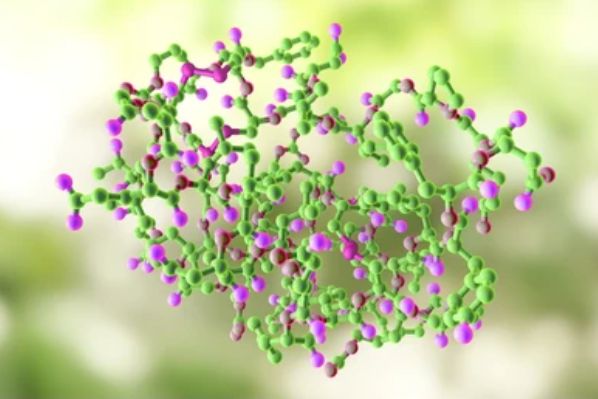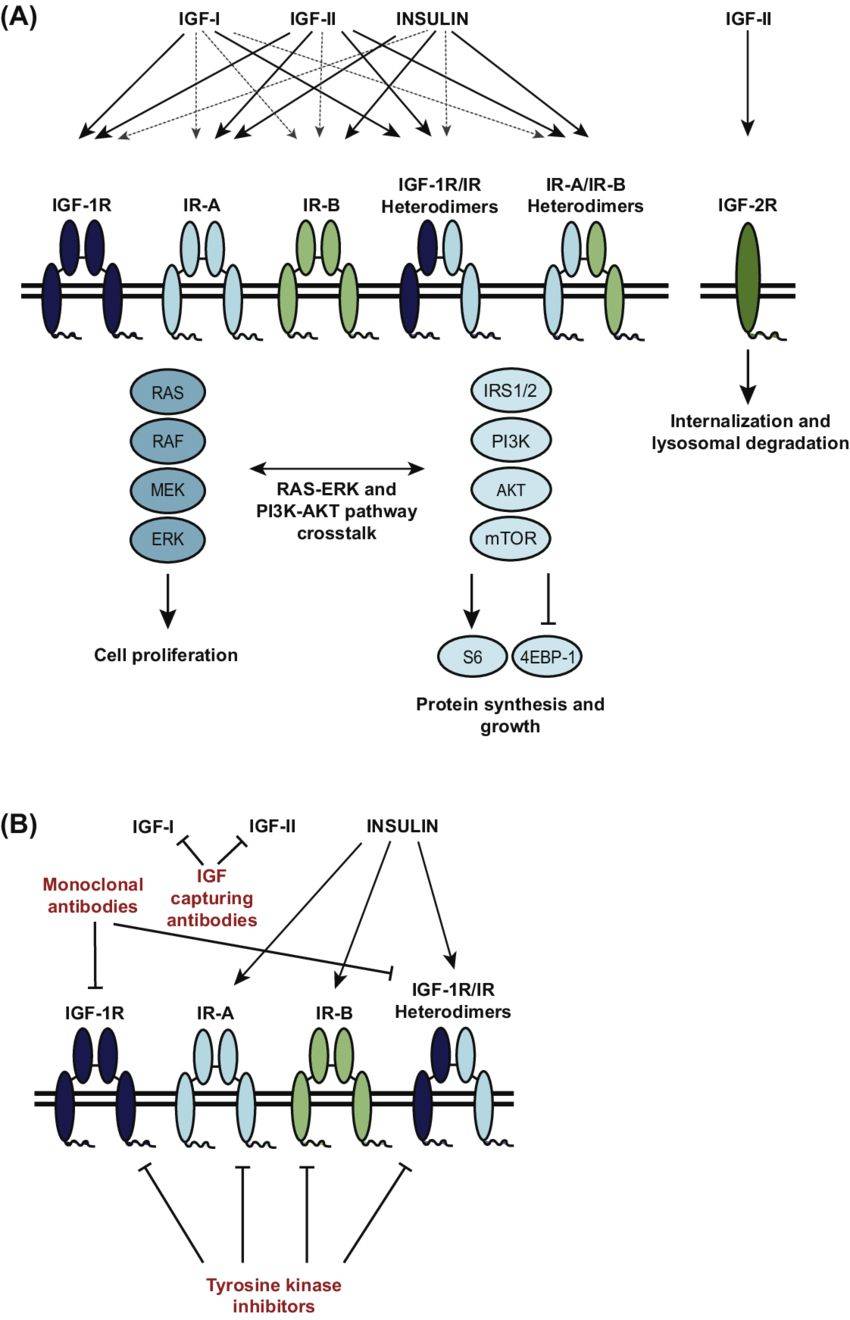Interferon
Available Resources for IGF Research
Creative BioMart offers a wide range of assistance to researchers studying IGFs, providing a variety of products and a wealth of resources. These valuable assets serve as important references for researchers to help them better understand the critical functions of IGFs in a variety of physiological processes and diseases.
- Our product line includes recombinant proteins, magnetic beads pre-coupled to proteins, cell and tissue lysates, and more.
- Our resources related to IGFs include involved pathways, protein functions, interacting proteins, related articles, and research areas.
Our Featured Products
| Cat.# | Product name | Species | Source (Host) | Tag |
|---|---|---|---|---|
| IGF1-06H | Recombinant Human IGF1 protein | Human | E.coli | N/A |
| IGF1-057H | Active Recombinant Human IGF1 Protein | Human | E.coli |
About IGF
Insulin-like Growth Factors (IGFs) are a family of peptide hormones that share structural similarities with insulin. They play crucial roles in regulating growth, development, and metabolism in various tissues and organisms. The IGF family consists of two main members: IGF-1 and IGF-2.
Structure
IGFs are composed of a chain of amino acids arranged in a specific sequence. IGF-1 consists of 70 amino acids, while IGF-2 consists of 67 amino acids. Both IGF-1 and IGF-2 share structural similarities with insulin, including a conserved arrangement of cysteine residues that form disulfide bonds, contributing to their three-dimensional structure.
Action
IGFs are primarily produced in the liver, although several other tissues, including skeletal muscle, adipose tissue, and the brain, also contribute to their production. The synthesis and secretion of IGFs are tightly regulated by various factors, with growth hormone (GH) being a major stimulator of IGF production. GH, released by the pituitary gland, acts on the liver and other tissues to stimulate the synthesis and secretion of IGFs.
Once synthesized and released into the bloodstream, IGFs act as endocrine hormones, traveling to target tissues throughout the body. They exert their effects by binding to specific cell surface receptors called insulin-like growth factor receptors (IGFRs). The two main IGFRs are IGF-1R and IGF-2R.
IGF receptors are transmembrane receptors with intrinsic tyrosine kinase activity. Upon binding of IGFs, the receptors undergo autophosphorylation, initiating downstream signaling pathways. These pathways include the PI3K-Akt pathway and the Ras-MAPK pathway, which regulate various cellular processes such as cell growth, proliferation, differentiation, and survival.
Functions
IGFs play crucial roles in regulating growth, development, and metabolism in various tissues and organisms. Some of their key functions include:
- Growth and Development: IGFs are involved in promoting prenatal and postnatal growth. They stimulate cell division, protein synthesis, and tissue development. During prenatal development, IGFs play a critical role in the growth of organs and tissues.
- Tissue Repair and Regeneration: IGFs have a significant role in tissue repair and wound healing. They promote the proliferation of cells involved in tissue regeneration, such as fibroblasts and endothelial cells. IGFs also contribute to the formation of new blood vessels (angiogenesis).
- Metabolism: IGFs influence metabolism by regulating glucose uptake, protein synthesis, and lipid metabolism. They have insulin-like effects in peripheral tissues, promoting glucose uptake and utilization. IGFs also regulate the breakdown and synthesis of proteins and influence lipid metabolism.
- Cell Survival and Anti-apoptotic Effects: IGFs promote cell survival by inhibiting apoptosis (programmed cell death). They activate signaling pathways that prevent cells from undergoing apoptosis, ensuring their survival and contributing to tissue homeostasis.
- Neurodevelopment and Brain Function: IGFs play a crucial role in neurodevelopment, influencing neuronal growth, differentiation, and synapse formation. They are also involved in maintaining brain function, including learning and memory processes.
- Regulation of Hormones: IGFs interact with other hormones, such as growth hormone (GH) and insulin, to coordinate growth, metabolism, and reproductive functions.

IGFs and Certain Diseases
IGFs and dysregulation of their signaling pathways have been implicated in various diseases. Here are some examples of diseases and conditions associated with IGFs:
- Cancer: IGFs and their signaling pathways play a significant role in cancer development and progression. Dysregulated IGF signaling can contribute to uncontrolled cell growth, proliferation, and resistance to apoptosis, promoting tumor formation. Increased IGF ligand expression, amplification of IGF receptors, and alterations in downstream signaling components have been observed in several types of cancers, including breast, prostate, colorectal, and lung cancers.
- Acromegaly: Acromegaly is a hormonal disorder characterized by excessive growth hormone (GH) production, leading to elevated IGF-1 levels. The overproduction of GH stimulates the liver to produce excess IGF-1, resulting in abnormal growth of tissues and organs. Acromegaly can cause enlarged hands, feet, facial features, and other physical abnormalities.
- Laron syndrome: Laron syndrome, also known as Laron-type dwarfism, is a rare genetic disorder characterized by insensitivity to GH and reduced IGF-1 levels despite normal or elevated GH levels. Individuals with Laron syndrome have impaired growth, resulting in short stature. This condition is caused by mutations in the genes encoding the GH receptor or downstream signaling components of the IGF system.
- Insulin Resistance and Type 2 Diabetes: Insulin resistance, a hallmark of type 2 diabetes, is associated with impaired IGF signaling. Insulin resistance can affect the responsiveness and activity of IGF receptors, leading to altered IGF signaling and impaired glucose metabolism. Dysregulated IGF-1 levels and signaling have been implicated in the development of insulin resistance and type 2 diabetes.
- Age-related Diseases: Dysregulation of IGF signaling has been implicated in age-related diseases, including neurodegenerative disorders such as Alzheimer's and Parkinson's diseases. Altered IGF-1 levels and signaling have been associated with neurodegeneration, impaired neuronal function, and cognitive decline observed in these conditions.
- Cardiovascular Disease: IGFs have been implicated in cardiovascular health and disease. Dysregulated IGF signaling can contribute to the development of atherosclerosis, hypertension, and cardiac hypertrophy. IGF-1 has been shown to influence vascular function, endothelial cell proliferation, and smooth muscle cell growth, which are relevant to cardiovascular health.
It's important to note that while dysregulation of IGF signaling is associated with these diseases, the exact mechanisms and contributions of IGFs can vary depending on the specific condition. Ongoing research is aimed at understanding the complex roles of IGFs in disease development and identifying potential therapeutic targets for intervention.
 Fig.2 IGF signaling pathway and targeting strategies. (Liefers-Visser JAL, et al., 2017)
Fig.2 IGF signaling pathway and targeting strategies. (Liefers-Visser JAL, et al., 2017)
If you have any questions, requirements, or cooperation intentions, please feel free to contact us. We very much look forward to working with you and helping you achieve research and commercial success.
Related References
- Melnik BC, Schmitz G. Role of insulin, insulin-like growth factor-1, hyperglycaemic food and milk consumption in the pathogenesis of acne vulgaris. Exp Dermatol. 2009 Oct;18(10):833-41.
- Liefers-Visser JAL, Meijering RAM, Reyners AKL, van der Zee AGJ, de Jong S. IGF system targeted therapy: Therapeutic opportunities for ovarian cancer. Cancer Treat Rev. 2017;60:90-99.
- Zha J, Lackner MR. Targeting the insulin-like growth factor receptor-1R pathway for cancer therapy. Clin Cancer Res. 2010;16(9):2512-2517.

